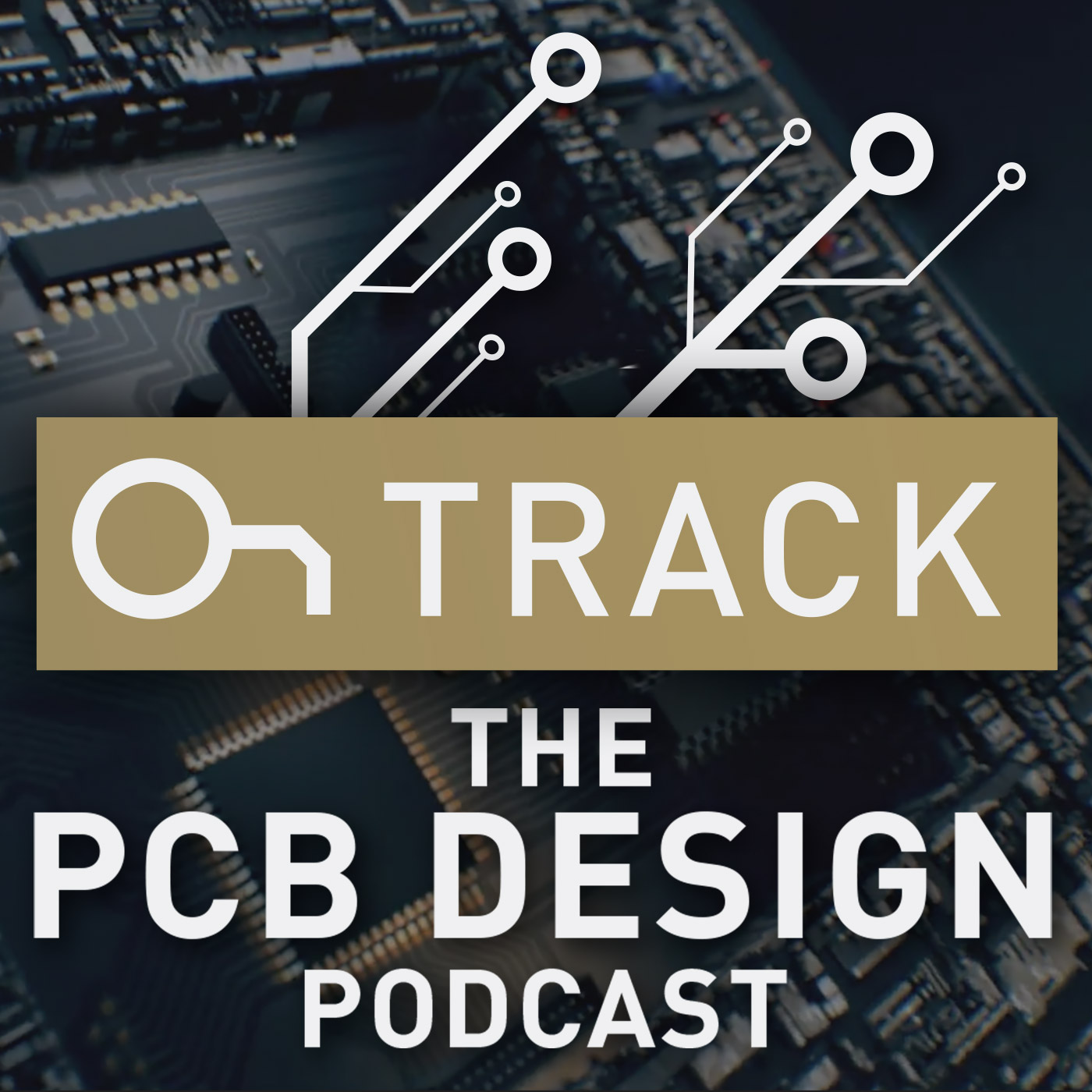Episodes

Sunday Nov 15, 2020
Five Issues Your Assemblers Want You to Avoid
Sunday Nov 15, 2020
Sunday Nov 15, 2020
Chris Denney is CTO of Worthington Assembly and cohost of the ‘Pick, Place, Podcast’ podcast. He joins OnTrack to tell us about his talk, which is titled “Your Manufacturer Is Stupid - Help Them”. Learn the five tentpole problems your manufacturers have to deal with, and how avoiding these simple issues will speed your projects through assembly.
Work from Anywhere. Connect with Anyone.
Show Highlights:
- Humble beginnings; intro to Worthington Assembly CTO Chris Denney
- Chris Gammel and the Amp Hour podcast
- The story behind “Your Manufacturer is Stupid - Help Them”
- No. 1: Identifying polarity of components
- No. 2: Silkscreen legibility (avoid incurring extra costs)
- No. 3: Panelization (why it matters)
- No. 4: PCB properties (use a template)
- No. 5 Specific manufacturer’s part numbers
- Bonus tip: Plated Through-hole sizes
- Worthington, Circuithub,and the Pick, Place, Podcast
Links and Resources:
- Chris Denney on Linkedin
- Worthington Assembly Blog (Includes Chris’s presentation from Kicon 2019)
- CircuitHub Website
- Design With Manufacturing Panel from AltiumLive 2020
- Pick, Place, Podcast
Work from Anywhere. Connect with Anyone.

Wednesday Nov 04, 2020
SOURCE® Hydropanels Renewable Clean Water from the Air
Wednesday Nov 04, 2020
Wednesday Nov 04, 2020
According to the World Health Organization, 2 billion people across the globe rely on contaminated water sources. Dr. Cody Friesen, founder of SOURCE and Fulton Engineering professor saw this problem, and developed the SOURCE® Hydropanel, a device which can extract water vapor from ambient air to create clean, potable water using the power of the sun.
Cody Friesen joins the OnTrack podcast to discuss materials science, entrepreneurship, the ASUIO competition, and how he came to develop the hydropanel.
Work from Anywhere. Connect with Anyone.
Show Highlights:
- Cody Friesen and materials science
- SOURCE and the search renewable water
- Alarming statistics: clean drinking water and foodborne illness
- SOURCE Hydropanels: how they work and what they do
- Why hydropanels are a massive multidisciplinary problem
- The worldwide impact of SOURCE Hydropanel technology
- ECEDHA (The Electrical and Computer Engineering Department Head Association)
- Entrepreneurship and the ASUIO competition
- Apples, Soundskrit, and chip-scale LIDAR
- Trends in PCB Design amid the rise of Electrical Engineers
- EEs and cross disciplinary synergy
Links and Resources:
- Cody Friesen on Linkedin
- Source Global on LinkedIn
- www.Source.co
- Apply to the 2021 ASU Innovation Open
- Who is Source Water?
- Cody Friesen featured on BBC Video Spotlight Future Innovators
Work from Anywhere. Connect with Anyone.
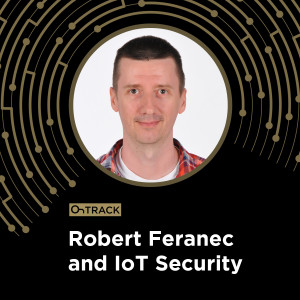
Friday Oct 02, 2020
Robert Feranec and IoT Security
Friday Oct 02, 2020
Friday Oct 02, 2020
The AltiumLive Virtual Summit is just around the corner! So in a unique episode of OnTrack, we share clips of Robert Feranec, motherboard designer and founder and CEO of Fedeval Academy, speaking on such topics as IoT device security in an increasingly connected world, the pitfalls of underestimating the complexity of your fellow stakeholder’s job, and the value of attending AltiumLive. This is a short and impactful episode you shouldn’t miss.
Work from Anywhere. Connect with Anyone.
Show Highlights:
- Introduction to Robert Feranec, Founder of Fedevel Academy
- From design engineer to educator: Robert’s career trajectory
- Learn, Connect, Get Inspired: Robert on the value of AltiumLive
- ”It’s never simple”: the illusion of simplicity in other stakeholders’ jobs
- Security and the rise of security of IoT devices
- Altium 365 and cloud security: Amazon Web Service’s Dave Pellerin’s AltiumLive keynote
Links and Resources:
- Register for FREE: AltiumLive 2020 Virtual Summit
- Connect with Rober Feranec. Join the conversation on Discord
- Robert Feranec on LinkedIn
- Robert Feranec on How to Implement The PCB Design Process
Work from Anywhere. Connect with Anyone.
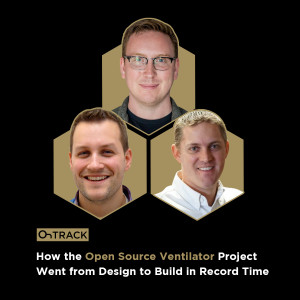
Tuesday Sep 22, 2020
How the Open Source Ventilator Project Went from Design to Build in Record Time
Tuesday Sep 22, 2020
Tuesday Sep 22, 2020
Dugan Karnazes (Velocity Research), Rob Cooke (Calumet Electronics), and Chris Denney (Worthington Assembly) join the OnTrack podcast to relay their experiences while working on the OSV (Open Source Ventilator) project. The OSV project is a global coalition formed entirely of volunteer engineers, corporations, manufacturers, and hospital systems which helped alleviate world-wide ventilator shortages at the onset of the COVID-19 pandemic.
Learn how Dugan, Rob, and Chris helped the Open Source Ventilator project design, manufacture, and supply ventilators in record time.
Show Highlights
- Introduction to Dugan Karnazes, Rob Cooke, and Chris Denney
- When engineering projects go viral: How the OSV (Open Source Ventilator) Project began
- ”30 minutes I’ll never forget”—How Chris Denney joined the OSV project
- ”Let’s just make this thing happen”—Why OSV isn’t your everyday engineering project
- How Rob Cooke joined the Open Source Ventilator project
- “Using Altium 365 is like engineering with cheat codes”—coordinating the OSV project
- Chris Denney on how Altium 365 eliminated needless delays
- How software like G Suite and Altium 365 are fundamentally changing the future of design
- The biggest thing we can do to impact our industry
- How the industry is streamlining design by making geography irrelevant
Resources:
- Register for AltiumLive 2020: Virtual PCB Summit (Free)
- Leigh Gawne on the historic launch of Altium 365
- Dugan Karnazes Podcast about OSV
- Rob Cooke Podcast OSV collaboration beyond Gerber Files for Fabricators
- Innovators Around the Globe Contribute to Coronavirus Intervention
- Rising to the Occasion with Altium Designer + Altium 365
- Velocity Research Website
- Calumet Electronics Website
- Worthington Assembly Website
- Dugan Karnazes on LinkedIn
- Rob Cooke on LinkedIn
- Chris Denney on LinkedIn
Now you can get the ultimate PCB design productivity with the easiest platform for PCB design. Easily communicate design changes to your team with Altium 365.
Work from Anywhere. Connect with Anyone.
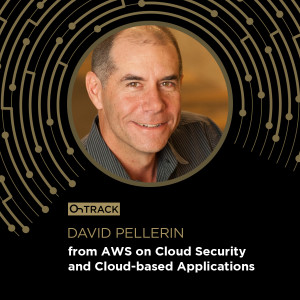
Tuesday Sep 15, 2020
Dave Pellerin from AWS on Cloud Security and Cloud-based Applications
Tuesday Sep 15, 2020
Tuesday Sep 15, 2020
Get ready! AltiumLive 2020 is just around the corner, and Dave Pellerin has joined the roster. Dave is Head of Worldwide Business Development for Infotech/Semiconductor at Amazon Web Services (AWS), and a former Director of Marketing for FPGA Design Products at Altium. Dave has also authored five Prentice Hall books on topics from FPGA programming (Field Programmable Gate Arrays) to design automation.
Dave joins us on the OnTrack podcast to bring his uniquely qualified perspective to bear on topics like cloud security and secure collaboration in a disaggregated market, and FPGA (Field Programmable Gate Arrays) and their applications in the cloud, as well as to give us the details on the upcoming AWS (Amazon Web Services) re:Invent conference.
Work from Anywhere. Connect with Anyone.
Show Highlights:
- Meet Dave Pellerin and AWS (Amazon Web Services)
- Cloud security and supply chains: recent trends toward secure collaboration environments
- How Amazon’s acquisition of Annapurna Labs spurred its interest in secure collaboration
- FPGAs (Field Programmable Gate Arrays) and their broad applications in the Cloud
- ”We take care of all that heavy lifting”: AWS IoT Core and advice to users of IoT (Internet of Things) devices
- A quick look at Dave’s upcoming contribution to AltiumLive 2020
- Why Amazon is seeking to connect with Altium users
- Coming Soon... Amazon’s annual AWS re:Invent conference and other exciting upcoming AWS events
Links and Resources:
- AltiumLive 2020 FREE Registration Here
- Dave Pellerin on LinkedIn
- Amazon AWS Website
- Amazon Reinvent Conference
- AWS Semiconductor/Electronics Webpage
Work from Anywhere. Connect with Anyone.

Tuesday Sep 08, 2020
Speakers, Sessions & More! AltiumLive 2020 Virtual Summit
Tuesday Sep 08, 2020
Tuesday Sep 08, 2020
Altium’s VP of marketing, Lawrence Romine, returns to the OnTrack Podcast to discuss his goals for AltiumLive 2020 and beyond
Work from Anywhere. Connect with Anyone.
Show Highlights:
- Reintroducing Lawrence Romine, Altium’s VP of Marketing
- Lawrence’s goals for the future of AltiumLive
- Why AltiumLive focuses on substantive content and not marketing
- ”It’s because you gave them a voice...”; Altium’s history of supporting the underdog
- The Pros and Cons of going virtual with AltiumLive
- How Eli Hughes and TZero revolutionized brewing by letting brewers ‘hear the beer’
- ”If you like beer and you like engineering…”: Tin Whiskers Brewing
- The privilege of bringing Eric Bogatin and other rock stars of the industry to AltiumLive
- Garbage in, garbage out; vetting quality content in a complicated blogosphere
- ENTER Amazon: Altium 365 and the AWS (Amazon Web Services) platform
- ”No safety net”: Why AltiumLive does software demonstrations live
- Velocity Research’s Open Source Ventilator and other user feedback
- How Altium 365’s users seamlessly transitioned to remote work during the quarantine
Links and Resources:
- AltiumLive Virtual Summit: Register here for FREE
- Lawrence Romine on LinkedIn
- AltiumLive Virtual Summit: Meet the Speakers
- Previous Episode with Lawrence Romine:
Work from Anywhere. Connect with Anyone.

Wednesday Sep 02, 2020
Eli Hughes on Becoming a Full Stack Hardware Engineer
Wednesday Sep 02, 2020
Wednesday Sep 02, 2020
Robotics, undersea vehicles, space science, and Professor Of Electrical Engineering... Eli Hughes has led an interesting career. Now an acoustics guru and co-founder of Tzero, he joins OnTrack to discuss guitar pedals, the secret of overcoming imposter syndrome, and his company’s surprising approach to beer fermentation monitoring.
Eli will be speaking during AltiumLive 2020’s three-day event on ‘the Road to Becoming a Full Stack Hardware Engineer’, and gives us a preview of other topics he’s got in store.
Altium 365 Podcast Listener Discount
Show Highlights:
Show Highlights:
Introduction to Eli Hughes, CEO of Tzero.
Tzero’s innovative solution to fermentation monitoring.
Eli’s AltiumLive topic and ‘the Road to Becoming a Full Stack Hardware Engineer'.
Dismantling imposter syndrome.
From guitar pedals to a graduate degree in Acoustics.
Check your ego at the door and stay curious: Sage advice to engineers.
A preview of the topics Eli will cover at AltiumLive 2020.
Links and Resources:
- AltiumLive2020: Register Here For Free
- Eli Hughes on LinkedIn
- Tzero on LinkedIn
- Visit Tzero website here
- Checkout Eli Hughes latest DIY PCB design project: The “Mini Monkey” Board – Using the LPC55S69 in the VFBGA98 Package
Now you can get the ultimate PCB design productivity with the easiest platform for PCB design. Easily communicate design changes to your team with Altium 365.
Altium 365 Podcast Listener Discount

Tuesday Aug 25, 2020
Why You Should Stop Hanging on to Legacy Design Rules
Tuesday Aug 25, 2020
Tuesday Aug 25, 2020
He’s back! Signal integrity expert Eric Bogatin returns to the OnTrack podcast to give us a preview of his upcoming AltiumLive 2020 panels, discuss his ongoing quest to impart best design practices to the next generation of engineers, and teach us all how to avoid problematic ‘legacy design rules’ that no longer apply to today’s technology.
Dr. Bogatin is Signal Integrity Evangelist at Teledyne LeCroy, and adjunct professor and lecturer at University of Colorado Boulder. You can also find his Webinars at Be the Signal.
Altium 365 Podcast Listener Discount
Show Highlights:
- Reacquainting with Eric Bogatin
- Jedi Master Yoda and the origins of common design myths
- ’Legacy design rules’ and the dynamics keeping common myths in place
- Eric’s Signal Integrity Journal article, “The Myth of Three Capacitor Values”
- Do your own analysis: the archeology of truth in the age of the search engine
- Istvan Novak, Steve Sandler, Heidi Barnes, and more: upcoming AltiumLive panel(s)
- Best measurement practices: Eric’s Webinars and where you can find them
- Eric’s ebook: Bogatin’s Practical Guide to Transmission Line Design and Characterization for Signal Integrity Application
- Register for FREE: AltiumLive Virtual Summit
Links and Resources:
- Eric Bogatin on LinkedIn
- Webinar: Be the Signal
- Journal Article: The Myth of Three Capacitor Values
- EBook: Bogatin’s Practical Guide to Transmission Line Design and Characterization for Signal Integrity Application
- Recent Podcast Episodes with Eric:
Altium 365 Podcast Listener Discount
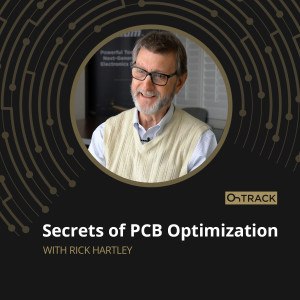
Tuesday Aug 18, 2020
Secrets of PCB Optimization with Rick Hartley
Tuesday Aug 18, 2020
Tuesday Aug 18, 2020
Rick Hartley is former senior principal engineer for L-3 Avionics Systems and current principal of RHartley Enterprises, where he serves as an international consultant on signal integrity and EMI issues. With more than 50 years of experience in the industry, the majority of Rick’s career has been spent working in aircraft avionics, telecommunications, and PC boards, and specializing in suppressing noise in analog, RF, and digital circuits.
Rick joins Judy on the OnTrack podcast to discuss everything from copper balance and sizing your boards for maximum producibility and minimum cost, to his upcoming presentation at AltiumLive 2020 and his contribution to PCB West’s upcoming virtual conference.
Best not to miss this one!
Work from Anywhere. Connect with Anyone.
Watch the video, click here. [link to website live page]
Show Highlights:
- Who is Rick Hartley? A brief introduction.
- More than 120 books; Rick’s response to the challenges of decreasing rise times.
- Rick’s upcoming live presentation at AltiumLive 2020.
- Sizing your board for maximum producibility and minimum cost.
- One engineer’s extreme reaction to an unexpected cost minimization measure.
- Hard learned lessons in copper balance.
- Accounting for communication disconnects between fabricator and engineer.
- Quantity vs Quality: the importance of taking control of your fabricator choices.
- The impact of footprints on the ability to assemble.
- How and why the PCEA (Printed Circuit Engineering Association) was formed.
- What you can expect from PCB West’s upcoming virtual conference.
- It’s free, free, free! Details on AltiumLive 2020.
Links and Resources:
AltiumLive 2020 Virtual Summit
PCEA Website
PCB West
Kelly Dack’s Podcast about Panel Spacing
Rick’s Top 12 Engineering Books
Previous Episode with Rick: PCB Stack-up Design Best Practices with Rick Hartley
Now you can get the ultimate PCB design productivity with the easiest platform for PCB design. Easily communicate design changes to your team with Altium 365.
Work from Anywhere. Connect with Anyone.
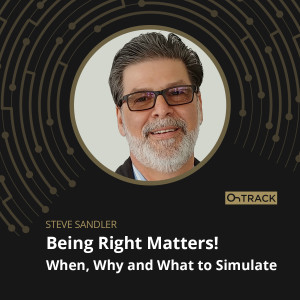
Tuesday Aug 11, 2020
Being Right Matters! When, Why and What to Simulate
Tuesday Aug 11, 2020
Tuesday Aug 11, 2020
Steve Sandler, electronics simulation and PI guru, prolific author, AEi Systems founder, and president of Picotest, joins the OnTrack Podcast for a “hold onto your seats” discussion of how he came to simulate the International Space Station for NASA, the intricacies of the James Webb Space Telescope, his flash of insight while improving WEBENCH®, modern board level issues, and his secret life as a pizza chef.
Steve will have a significant role in the virtual edition of AltiumLive coming up in October 2020. So get to know him, his new company Picotest, connect with him on LinkedIn, and even take a virtual tour of his lab!
Altium 365 Podcast Listener Discount
Show Highlights:
- The essential need for simulation: Steve Sandler and his upcoming role in AltiumLive 2020
- “...to be useful, it has to be fast”: key takeaways from the circuits simulation effort
- How the James Webb Space Telescope demonstrates the necessity of simulation
- Understanding why and what you’re simulating
- ”A whole new set of problems”: today’s board level issues
- Europa satellite; ground bounce in the printed circuit board
- Altium’s Ben Jordan’s go-to SPICE simulation book
- The ISS experiences a solar eclipse every 90 minutes: NASA, AEi Systems, and Steve’s most difficult simulation
- A brief history of the SPICE engine (Simulation Program with Integrated Circuit Emphasis)
- Brainstorm!—How Steve used a behavioral model to fix WEBENCH®
- Designers After Hours: from PI to (PI)zza; Steve’s secret life as a pizza chef
- ”I got bored…”: coming out of retirement to start Picotest
- Sandler on LinkedIn: take a virtual tour of Steve’s laboratory!
Links and Resources:
- Steve Sandler on LinkedIn
- Steve Sandler the Pi Guy. Watch his DIY Pizza.
- LOOK! Steve Sandler shared a video of his Home Lab.
- Picotest on LinkedIn
- Picotest website
- AltiumLive Registration Page
- Steve Sandler Amazon Author Page
Altium 365 Podcast Listener Discount
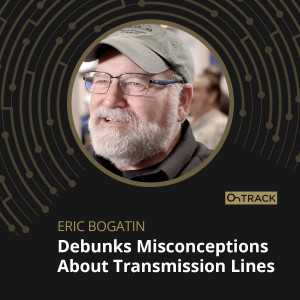
Tuesday Aug 04, 2020
Eric Bogatin Debunks Common Misconceptions About Transmission Lines
Tuesday Aug 04, 2020
Tuesday Aug 04, 2020
Signal integrity expert, Dr. Eric Bogatin, has a new book whose mission is to establish a solid educational foundation in the essential principles of signal interaction with transmission lines. The multimedia eBook, Bogatin’s Practical Guide to Transmission Line Design and Characterization for Signal Integrity Application, is currently available from Artech House and can also be found on Amazon.
Dr. Bogatin is Signal Integrity Evangelist at Teledyne LeCroy, a leading provider of oscilloscopes, protocol analyzers, and test and measurement solutions. He joins the OnTrack Podcast to discuss his book and give us a sneak peak of his upcoming AltiumLive panel with Istvan Novak, Heidi Barnes of Keysight, and Steve Sandler of Picotest.
Altium 365 Podcast Listener Discount
Show Highlights:
- In addition to so much else, Eric Bogatin is a science fiction author! Check out his books Shadow Engineer, and S is for Space
- An overview of Eric’s new multimedia eBook, ‘Bogatin’s Practical Guide to Transmission Line Design and Characterization for Signal Integrity Application’
- ”I think the most confusing topic out there...is transmission lines”; how Eric’s book builds a solid foundation for anyone seeking clarification on transmission lines.
- Clarifying engineering’s most confusing issues
- Teledyne LeCroy’s new TDR calculator
- The practical nature of transmission lines: common misconceptions among engineers
- Embedded videos, demos, and calculations: how Eric’s multimedia book provides an interactive experience
- Hard copies, soft copies, ALL the copies: how and where to find Eric’s book(s)
- AltiumLive announcement
- The plain truth about split ground planes: Eric provides a sneak peak of his upcoming AltiumLive panel with Istvan Novak, Heidi Barnes of Keysight, and Steve Sandler of Picotest.
- ”There’s one case where you wanna use a split ground plane...”: Eric previews his upcoming demo on crosstalk reduction
Links and Resources:
Eric Bogatin on LinkedIn
Bogatin’s Practical Guide to Transmission Line Design and Characterization for Signal Integrity Applications
Artech House Publishers
Eric Bogatin Author Page on Amazon
Shadow Engineer (Fiction Scifi book by Eric Bogatin)
S is for Space (2nd Scifi book by Eric Bogatin)
Teledyne LeCroy Website
Signal Integrity Journal
Podcast Episode: Signal Integrity Evangelist Eric Bogatin, our Expert Insider to DesignCon 2020
Altium 365 Podcast Listener Discount
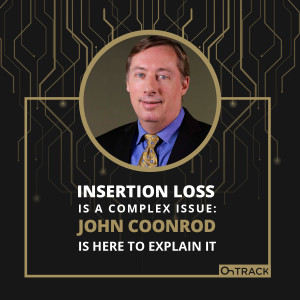
Wednesday Jul 29, 2020
Insertion Loss is a Complex Issue: John Coonrod is Here to Explain It
Wednesday Jul 29, 2020
Wednesday Jul 29, 2020
Altium 365 Podcast Listener Discount
The OnTrack Podcast welcomes John Coonrod back to the show. John is Technical Marketing Manager at Rogers Corporation and a senior engineering professional with a rich background in PCB design, fabrication, processing, and modeling. John also has extensive experience with circuit materials, making him the ideal candidate for the topic of today’s podcast: insertion loss.
Show Highlights
- 01:45—Clarifying terms: a quick overview of Microstrips vs Striplines
- 02:20—Exploring laminates, multilayered circuits, and plated through-holes
- 06:42—Applying electromagnetic fields: a prerequisite for understanding insertion loss
- 09:25—The four components of insertion loss
- 13:10—RO4350B™; a friend to all fabricators?
- 15:10—Pros and Cons of electroless nickel immersion gold (ENIG)
- 18:13—John’s advice to design engineers on modeling for ENIG’s performance range
- 21:33—Navigating the relationship between solder masks and insertion loss
- 24:20—A call to viewers and listeners: Got a copper-related topic you’d like to hear John and Judy discuss? Submit your requests!
Resources:
John Coonrod on Linkedin
Rogers Corporation Website (Advanced Connectivity Solutions)
(Includes Coonrod’s corner videos, data sheets, calculators and more)
Autonomous driving Resource Page (Guides, Videos and Material selection)
ROG Mobile App (Resources accessible from your smartphone or tablet)
White Paper High Performance PCBs: Judy Warner, Chris Savalia, Michael Ingham
Altium 365 Podcast Listener Discount

Tuesday Jul 14, 2020
How To Actually Evolve During COVID-19
Tuesday Jul 14, 2020
Tuesday Jul 14, 2020
Angus Thomson is Senior Electronic Engineer and founder of CircuitBuilder, a brand new platform for simplifying the development of custom electronics out of Suffolk, England. Angus joins the OnTrack Podcast to share his experiences as CircuitBuilder’s founder, and to discuss the fine points of CircuitBuilder’s evolving business model, which has so far proven immune to the challenges of the global pandemic.
Altium 365 Podcast Listener Discount
Show Highlights
- Introduction to Angus Thomson
- ”I thought: there’s a better way to do this”—Angus’ road to entrepreneurship
- How CircuitBuilder utilizes Altium 365 to provide customers with realtime 3D views of their designs
- The CircuitBuilder growing network of engineers
- CircuitBuilder’s successful, lightweight recruitment process
- Proving it out in your own backyard: Angus on expanding market reach
- Transparency: How Altium 365 pushes CircuitBuilder beyond the errors of the past
- Design, Manufacture, or both? CircuitBuilder’s evolving business model
- The secret of CircuitBuilder’s resilience during the coronavirus health crisis
- Angus offers his insight on the future of design in a post COVID-19 world, and on CircuitBuilder’s role in that future
Resources:
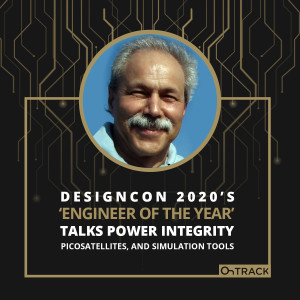
Tuesday Jul 07, 2020
Tuesday Jul 07, 2020
Istvan Novak, Principal Signal and Power Integrity Engineer for Samtec Inc. and winner of the DesignCon 2020 Engineer of the Year Award joins the OnTrack podcast to talk picosatellites, simulation tools, and the rising importance of power integrity.
Altium 365 Podcast Listener Discount
Show Highlights
- Introduction to Istvan Novak
- A brief look at Samtec Inc., the successful computer equipment manufacturing company headquartered in Indiana.
- Istvan’s path to becoming a Power Integrity expert
- CubeSats and the students who make them
- The challenges of dimensionality: has power integrity become more important than signal integrity?
- When Power Integrity is an afterthought
- The value of expert disagreement
- “Regardless of what we want to simulate, we can find good simulation tools to do it”: Good design and the challenges of modeling and simulation
- Closing thoughts; the first working Picosatellite; and the first electrosmog map of the globe
Resources:
- Istvan Novak on LinkedIn
- Samtec: gEEk spEEk SI Webinars.
- Samtec Silicon-to-Silcon Solutions Website
- The SI-List Archives
- Istvan Novak: DesignCon 2020 Engineer of the Year Award
- BUDAPEST UNIVERSITY OF TECHNOLOGY AND ECONOMICS Picosatellite
- Istvan Novak’s Electrical Integrity Website
- Picotest Website
- Signal Integrity Journal
- Design 007 Magazine, See pg. 38 Do You Really Need That Ferrite Bead in the PDN?
- First Electrosmog Map of the globe
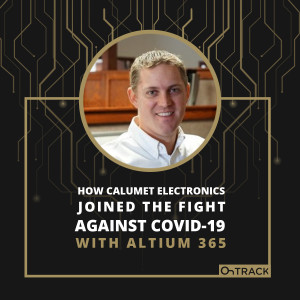
Tuesday Jun 23, 2020
How Calumet Electronics Joined the Fight Against COVID-19 With Altium 365
Tuesday Jun 23, 2020
Tuesday Jun 23, 2020
The town of Calumet, with a population of barely seven-hundred, was once the booming epicenter of Michigan’s upper peninsula mining industry. When the industry began to fail, unemployment skyrocketed, and the townspeople sought local solutions for creating jobs that could sustain the town’s families.
Rob Cooke, Director of Engineering Services at Calumet Electronics Corp, joins the OnTrack podcast to discuss the Open Source Ventilator project, his experiences implementing Altium-365, and the radical decision business owners in that small town of Calumet, Michigan made more than 50 years ago, which led to the rise of Calumet Electronics Corp.
Altium 365 Podcast Listener Discount
Show Highlights
- Intro to Rob Cooke: how he got involved with Dugan Karnazes and the Open Source Ventilator Project.
- From copper ore to copper pours: Calumet, Michigan’s fascinating backstory.
- So what’s the hold-up? The right tool for avoiding excessive holds and other barriers to expedient design.
- Reality transcends the map: Altium-365 demos vs firsthand experience.
- The impact and implications of sudden hyper-efficiency at the designer, fabricator, and assembler level.
- The shock of realtime: “This is what can happen when things don’t go on hold!”
- Rob offers some final thoughts on the purchasing and quoting paradigm.
Resources:
- Rob Cooke on LinkedIn
- Calumet Website
- Open Source Ventilator Video
- AltiumLive 365 Demo
- Altium 365 product page
- Open Source Ventilator Project (OSV) Combats Ventilator Shortage
- Previous Episode with Rob Cooke: How to Conquer Data Package Problems

Tuesday Jun 16, 2020
How GreenSource Handles Microvia Reliability Issues With Jim Brown
Tuesday Jun 16, 2020
Tuesday Jun 16, 2020
Jim Brown of GreenSource Fabrication joins to discuss microvia reliability issues that so many people struggle with. GreenSource has been making great strides in this direction so listen now to learn how they’ve handled microvia reliability.
Altium 365 Podcast Listener Discount
Show Highlights
- Introduction to Jim Brown and GreenSource Fabrication
- A Brief History of GreenSource—becoming an open market supplier of PCBs in two phases
- ”Make it as automated as possible”—How GreenSource eliminates yield issues
- ”A well known issue”—exploring anomalies arising from stacked microvias
- Challenges presented by laser-drilling vias
- Virtual Meeting with ICP on July 15th and 16th
- Accelerated testing and the most reliable way of determining microvia reliability
- IST vs OM tester, which is preferred and what do they do
- Why GreenSource committed to OM testing
- Where to learn more about Jim Brown and GreenSource
- Outro and goodbyes
Resources:
- Jim Brown on LinkedIn
- Greensource Fabrication Website
- June OnTrack Newsletter
- The IPC Warning About Microvia Reliability for High Performance Products an article by Happy Holden
- IPC Microvia Reliability Summit Webinar on July 15-16, 2020
- Microvia Reliability in Ultra-High Density Interconnect Designs

Tuesday Jun 09, 2020
How to Transition Your Global Team to Altium 365
Tuesday Jun 09, 2020
Tuesday Jun 09, 2020
Jeremie Waller, Sr. Electrical Engineer at Quantel Laser, visits the OnTrack podcast to talk about infrared lasers, microplasma bursts, transitioning to Altium 365, and setting up user groups.
Work from Anywhere. Connect with Anyone.
Show Highlights
- An introduction to Jeremie Waller and Lumibird.
- Shock and awe: Class IV lasers and Lidar applications.
- A video demonstration: microplasmic bursts in the lab with the Merion C—a 100 millijoule 400Hz infrared laser.
- ”Going to the cloud just sounded like the right thing to do.” How Jeremie and his team became Altium 365 beta users at the outset of the pandemic.
- eedback on the transition to Altium 365 from Firmware Engineers, Material Managers, and
- Fabricators.
- Learn, connect, and get inspired: Adopting Altium and the importance of review meetings and training.
- Lost in Translation: working in a global work environment.
- Adventures in setting up Altium Live user groups.It takes less time than you think. Run by you, the users; and run your way.
Resources:
Quantel Lasers by Lumibird website
Introduction to Lumibird (Video)
Jeremie Waller LinkedIn profile
To Learn more about starting an Altium User Group:

Wednesday Jun 03, 2020
Exploring IPC’s Network of Printed Board Design Engineers
Wednesday Jun 03, 2020
Wednesday Jun 03, 2020
The renowned global trade association known as IPC has put together a network of printed board design engineering affiliates under the name IPC Design. IPC Design’s affiliates are comprised of PCB design engineers across the globe who are working to advance the art and science of printed design engineering.
IPC Design’s Patrick Crawford and Teresa Rowe join the OnTrack Podcast
Work from Anywhere. Connect with Anyone.
Show Highlights
- What is IPC Design, and what is its primary mission?
- Increased global presence and participation: How IPC is molding its future.
- IPC Design’s worldwide buy-in, its fresh new participants, and how the quarantine has affected participation.
- Has productivity gone up since quarantine?
- Lessons in remote working and the importance of taking time for yourself.
- Between January 2020 and now.
- What’s in store for the future: IPC’s collaborative content model.
- America, Europe, and Asia: IPC’s leadership group and global design committee.
- IPC Design is looking to fill a leadership role in Asia.
- What’s in it for you, the designer? Teresa and Patrick count the ways designers will benefit from IPC Design.
- ”Let’s start up a chapter!”: How individuals, student groups, and companies can get affiliated with IPC Design.
- Translators of the world, connect! How IPC Design can serve and collaborate with STEM groups all over the globe.
Resources:
Teresa Rowe on LinkedIn
Patrick Crawford on LinkedIn
IPC Website
Link to IPC Design webpage
Link to IPC Design enrollment page
Patrick Crawford’s video presentation on IPC Design
Realtime with IPC
IPC CEO John Mitchell on the Impact of COVID-19 on the Electronics Supply Chain
Work from Anywhere. Connect with Anyone.

Tuesday May 26, 2020
Best Practices Cultivating a Healthy and Productive Remote Working Environment
Tuesday May 26, 2020
Tuesday May 26, 2020
A leading research and advisory company, Gartner, Inc., found that nearly 75% of the 317 CFOs and business finance leaders they surveyed planned to move at least 5% of their formerly on-site workforce into permanently remote positions even after the COVID-19-related quarantines have ended.
Zach Peterson, prolific technology content writer, scientist/engineer, and owner and CEO of Northwest Engineering Solutions, joins the OnTrack Podcast to examine the implications of this finding, and to share best practices for creating a viable and productive remote working environment from both a manager’s and employee’s perspective.
Work from Anywhere. Connect with Anyone.
Show Highlights
- The business case for remote teams, and a worldwide freelancing network’s shocking statistic about the future of remote work
- Suggestions for managers and employees that will ensure their remote teams remain viable and productive
- The importance of setting clear expectations for your remote team
- Why you shouldn’t “babysit” your remote workers; the importance of allowing workers to work within their comfort zones
- Setting clear boundaries: how remote working can upset our work/life balance, and what steps one should take to cultivate it
- Tackling the myth of slackers in the remote work environment
- Ideal tools for the remote working environment
- “Engage earlier rather than later”—tips for maintaining the relationship between design engineers and manufacturers in a remote environment
Resources:
Zach’s Technical Articles on Altium.Com
How to Manage a Remote Team for Electronics Design
Signal Integrity Article Coronavirus Shows how Quickly Electronics Supply Chains Can
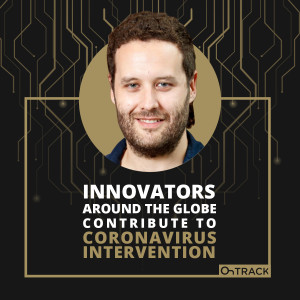
Tuesday May 19, 2020
Innovators Around the Globe Contribute to Coronavirus Intervention
Tuesday May 19, 2020
Tuesday May 19, 2020
Work from Anywhere. Connect with Anyone.
Colin Keogh PhD, CEO & Founder at The Rapid Foundation, has been on the front lines of the effort to combat ventilator shortages ever since a Facebook group called Open Source COVID-19 Medical Supplies (OSCMS) first presented the problem.
As cofounder of Open Source Ventilator (OSV) Ireland and a member of its core team, Colin offers his uniquely qualified perspective on open source innovation: its obstacles, its advantages, and its impact on world governments and regulatory bodies both now and in the future.
Show Highlights:
- Racing a pandemic: How Open Source Ventilator (OSV) Ireland turned a single Facebook post into an enterprise-scale organization composed of hundreds of engineers around the world.
- Silver linings in the time of COVID-19: evaluating the role of innovators in an epidemic, and how the lines separating government bodies and open source innovators become blurred in times of need.
- What young engineers are bringing to the table, and how the contributions of open-source innovators compare to that of Fortune 100 companies of today.
- ‘Fail fast and break things’ vs. the traditional approach to engineering: reconciling the two faces of modern innovation.
- Slack, Zoom, and Altium: the collaborative tools OSV Ireland used to produce solutions quickly while managing its unprecedented explosive growth.
- Welcome aboard; solutions are required: How OSV turned the usual medical design process on its head.
- ‘The provision of information is gonna be very important’: How the pandemic has affected the navigation of medical device regulation from country to country, and what innovators can expect from regulatory bodies in the future.
- How new revelations brought about by the pandemic will affect the interaction of medical device developers and regulatory bodies in the future.
- Colin’s delivers his unique perspective of the overall impact of COVID-19 on the world, and how engineers will use this experience to continue to overcome the obstacles ahead.
Links and Resources:
Colin Keogh on LinkedIn
Open Source Ventilator Website
OSV on Twitter
OSV on Linkedin
Fundraiser by Dugan Karnazes : Open Source Ventilator
Watch: Engineering Together to Save Lives

